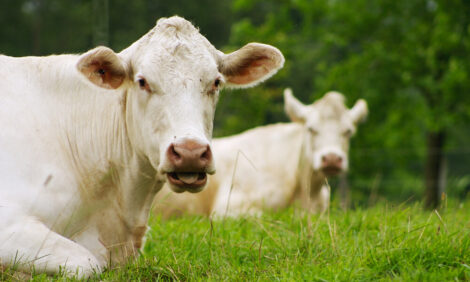



GE Animals: Enhance Human Health & Food Production
US - Cattle are “prion-free” and resistant to mad cow disease. Pigs can be genetically engineered to produce human compatible donor tissues, cells and organs and seafood can be farmed locally in a more sustainably and efficient manner. These are just a few examples of how genetically engineered (GE) animals can positively transform public health and food production for everyday consumers as well as those with life-threatening medical conditions.The report, Genetically Engineered Animals and Public Health – Compelling Benefits for Health Care, Nutrition, the Environment and Animal Welfare, details the promises of animal biotechnology and the scientific progress already achieved in recent years.
The report, recently published in its second edition, was authored by Scott Gottlieb, MD, of the American Enterprise Institute, and Matthew B. Wheeler, PhD, of the Institute for Genomic Biology, University of Illinois at Urbana-Champaign.
“When BIO initially commissioned this report in June 2008, the technology was still in development,” says Dr. David Edwards, director of animal biotechnology for the Biotechnology Industry Organization (BIO).
“Since then, the Food and Drug Administration finalized the regulatory guidance governing the use of GE animal technologies and the first product was approved, an anticoagulant derived from the milk of genetically engineered goats used for the prevention of blood clots.”
The report underscores the importance of additional technologies in the pipeline such as the rapidly growing AquAdvantage salmon that will help meet an increased consumer demand for sustainably produced seafood, and the Enviropig, which digests phosphorus more efficiently and reduces waste production.
Genetic engineering is the deliberate modification of the animal’s genome using techniques of modern biotechnology. By incorporating genes from other organisms in a process called transgenesis, GE animals are being developed to address five broad goals:
- Advance human health: GE animals can improve human health by producing novel replacement proteins, drugs, vaccines and tissues for the treatment and prevention of human disease.
- Enhance food production and quality: Animals that are genetically engineered have improved food production capabilities, enabling them to help meet the global demand for more efficient, higher quality and lower-cost sources of food.
- Mitigate environmental impact: GE animals can contribute to improving the environment and human health by consuming fewer resources and producing less waste.
- Optimise animal welfare. Genetic engineering offers tremendous benefits to the animals by enhancing the health, well-being and welfare of the animal itself.
- Improve industrial products: Genetic engineering can produce high-value industrial products, such as spider silk, for both medical and defense applications.
“The animal biotechnology industry has worked closely with the FDA and academia on the diverse applications of the technology for over ten years, and the road forward has been mapped with a rigorous science-based framework,” said Dr Edwards. “In addition, proactive stewardship guidance has been developed by industry.”
BIO is hopeful that these accomplishments will enhance investment in animal biotechnology research and advance innovation in towards product development.
A copy of the full report, Genetically Engineered Animals and Public Health – Compelling Benefits for Health Care, Nutrition, the Environment and Animal Welfare (Revised edition), is posted online at www.bio.org.
TheCattleSite News Desk


